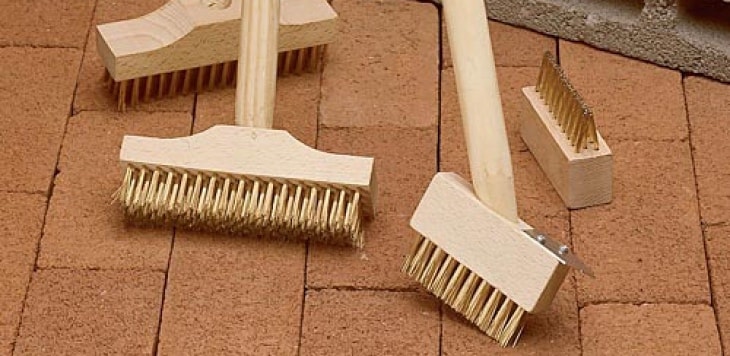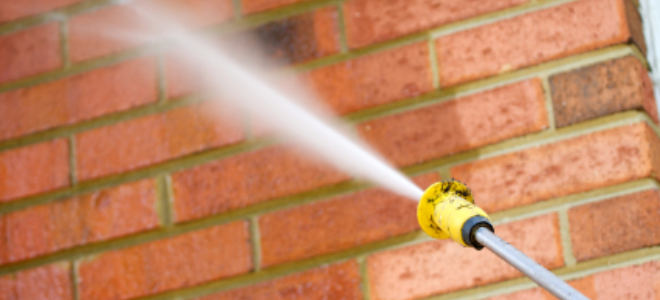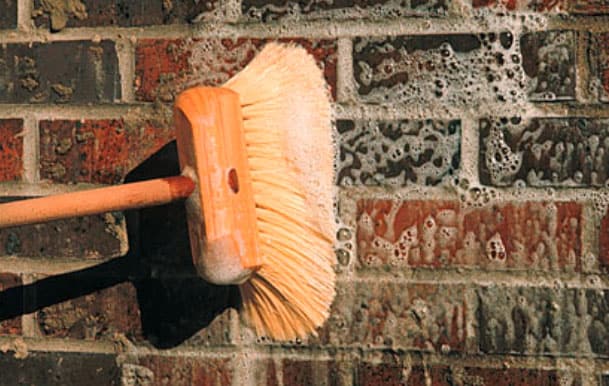Efflorescence refers to the literal or figurative act of blossoming…much like a flower.
When I think of flowering I might say “the efflorescence of nature in springtime”. When discussing French history the term might be used: “the efflorescence of culture during the Renaissance.”
In chemistry the term is used to refer to a process that occurs when something changes to a powder from loss of water of crystallization.
When I inspect and report the surface conditions of brick and concrete efflorescence has more aesthetic rather than structural consequences.
Generally there are two types:
Primary efflorescence is the first to appear. It develops as a whitish bloom or colour fade during the concrete setting and curing stage. It involves the water used to mix the fresh concrete. The soluble salt content of recycled wash water is higher than that of potable water, and is not easy to manage. Recycled wash water (water being reused or recycled at the concrete plant) is therefore not recommended for use in applications where efflorescence appearance is critical. The “water to cement” ratio (w/c) also influences primary efflorescence. Low water to cement ratio may increase primary efflorescence if the concrete is not cured properly.
Secondary efflorescence develops later, sometimes even months later. It is related largely to outside water, for example from external sources like rain or groundwater travelling through the concrete, and may appear as a uniform discolouration or as localised encrustations where water exits the concrete. Defects that direct water and runoff onto the concrete surface will increase efflorescence during service. These include inadequate detailing for moisture control; leaky gutters and downpipes; poorly filled mortar joints; cracks and permeable concrete. Efflorescence caused by such defects will tend to be localised where the water touches the concrete surface or evaporates from it.
I’ve inspected some conditions that include surface damage from spalling and freeze-thaw weathering – but generally efflorescence is easily removed.
Removing Efflorescence –Three Strategies
The best time for removing efflorescence is when the weather is warm and dry. Depending on your situation here are three strategies for cleaning efflorescence on brick and concrete.
- Stiff Brush
On some smooth surfaces, you may be able to use a stiff brush. Because efflorescence is dry and powdery, a brush will easily sweep it away. Wear a dust mask to protect your lungs.

- Water Rinse
On other surfaces, rinsing with a garden sprayer or pressure washer can dissolve efflorescence, allowing it to run off. With a pressure washer, use the widest-angle tip that works without damaging the surface.
Keep in mind – with the rinsing method – the water may bring more salts to the surface as the substrate dries, so re-rinsing or brushing may be necessary.
- Chemical Cleaning
Brushing and pressure-washing may be insufficient on tough salt deposits. An acidic cleaner, such as PROSOCO’s Sure Klean Light Duty Concrete Cleaner, can dissolve efflorescence more effectively.
Muriatic acid is never recommended for use on masonry and mortar because it can stain or burn your masonry, etch mortar joints and cause premature deterioration through water penetration. It’s also impure, unpredictable in strength and labor-intensive.
When considering how to prevent or clean efflorescence on your construction or maintenance project, it’s important to remember that no one solution is right for every project.
Join my 9,000+ member Facebook group for homeowners and inspectors.



- - - - - - - - - - - - - - - - - - - - -